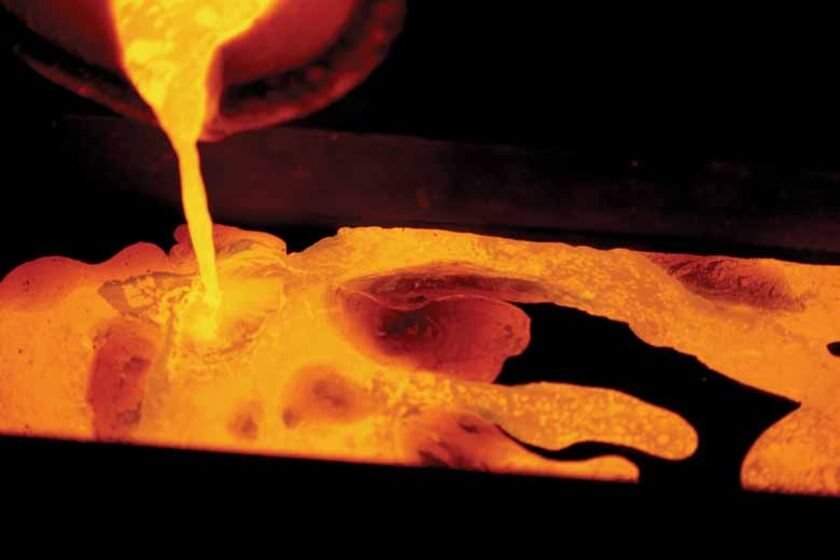Neutron Radiation
Neutron radiation is ionizing radiation consisting of free neutrons (with different kinetic energies).
Because neutrons are electrically neutral, the charge on the atomic nucleus and electrons has no effect on their movement. Therefore, neutron radiation penetrates matter relatively easily. The ionizing effect arises indirectly, mostly through the impact of light atomic nuclei or their components (eg protons), which in turn have an ionizing effect. Such collisions make the neutron energy lower (slower).
Neutrons – Neutrons have no charge and do not directly produce ionization, but indirectly transfer energy to other charged particles that can produce ionization. They traverse the entire electrosphere before interacting with atomic nuclei. They are very translucent and have a mass of 1,675 x 10ˉ²⁷ kg. Can be protected with water, paraffin and other hydrogen-rich materials.
The main effect of the slow neutron, especially thermal is based on its ability to stick to the atomic nucleus (neutron capture). Isotopes of the capturing atom are formed with the mass number increasing by 1 . Many of the isotopes made in this way are radioactive, so ionizing radiation can still occur long after neutron irradiation (depending on the half-life of the isotope) due to decay.
The free state of the neutron always ends after a very short time by neutron capture or some other nuclear reaction. Only in a high vacuum do free neutrons have the “opportunity” to “experience” their radioactive decay.
Health Risks to Neutron Radiation
Radiation protection considers the emission of neutrons as the fourth radiation risk in addition to the alpha, beta, and gamma forms. One of the dangers is neutron activation, in which the emitted neutrons are capable of causing radioactivity in most materials they attack, including the worker’s own tissues. This occurs during the capture of a neutron by an atomic nucleus, which turns into another nuclide, often a radioisotope (radiator core). This process represents much of the radioactive material released by the explosion of a nuclear weapon. This is also a problem in nuclear fission or fusion facilities, as it makes the device even more radioactive, requiring replacement and reprocessing as low-level nuclear waste.
Protection against emitted neutrons depends on the shield. Compared to conventional ionizing radiation based on photons or charged particles, neutrons bounce back and forth, slowly being absorbed by the light core. So, it takes a huge mass of hydrogen-rich material to stop it. Neutrons pass through most materials without difficulty, but interact enough to cause biological damage. Due to the high kinetic energy of neutrons, this radiation is considered the most serious and dangerous.
Read also: Ionizing Radiation Summary of Alpha (α), Beta (β), Gamma (γ) Radiations and Neutron
The most efficient materials are water, polyethylene, paraffin, wax or concrete, in which a large number of water molecules are bound to the cement. Light atoms help slow down the neutrons through elastic scattering, so they are absorbed by the nuclear reaction. However, such reactions often emit gamma radiation as a by-product, hence the importance of additional shielding to absorb the latter.
Since a neutron striking a hydrogen nucleus (a proton or a deuteron) imparts energy to the nucleus, it will break away from its chemical bonds and travel a small distance before stopping. These protons and deuterons have high linear energy transfer values, and are further stopped by the ionization of the material through which they pass. So in living tissue, neutrons are biologically damaging, about ten times more carcinogenic than photons or beta rays with the same level of radiation.
In humans and mammals, the first two radiation disturbances caused by acute exposure to neutron radiation are an almost immediate inflammatory reaction (early release of pro-inflammatory cytokines in the blood) and acute and hemostasis, induced by aplasia (cessation of development of all or part of the tissue and/or tissue). or organs) is then exacerbated by impaired coagulation (hemorrhagic syndrome, which decreases the vital prognosis of irradiated subjects).
The Effect of Neutron Radiation on materials and materials
Neutrons also degrade materials; the collision of the material by the neutrons causes a graded collision which results in point defects and dislocations in the material. Large neutron fluxes can weaken or swell metals and other materials. This is a problem for nuclear reactor vessels, and severely limits its life (it can be extended by gradual annealing of the vessel, which serves to reduce the number of accumulated dislocations).
The graphite moderator is very sensitive to this effect, known as the “Wigner effect” and requires annual annealing. The Wigner effect (named for its discoverer, Eugene Wigner), also known as the discomposition effect or Wigner’s disease, is the displacement of atoms in a solid caused by neutron radiation. Any solid can display the Wigner effect.
Radio Neutron Protection
Neutron radiation is more penetrating than alpha and beta. These are more dangerous than gamma rays. Fortunately, they are short-lived and rare. The radiation is amazing; Interventions in the reactor core, critical accidents, and on a different scale, the explosion of an atomic bomb or hydrogen bomb (in a hydrogen bomb, neutrons are generated by the deuterium-tritium reaction).
Radiation is rare, dangerous, penetrating, difficult to absorb.
Neutron radiation is the most dangerous. Fortunately, it is short-lived and rarely seen. Cases of extraordinary exposure: intervention in the heart of the reactor, criticality accidents and, on a completely different scale, the explosion of an atomic bomb or a hydrogen bomb (in this case neutrons are generated for example by the deuterium-tritium reaction). Usually, the exposure is reduced to a few neutrons produced by cosmic radiation. He is very weak.
In an atomic explosion, neutron radiation is very dangerous. But the neutron flash didn’t last long.
In the 80s, low-power atomic bombs were developed, with no explosive effect – therefore non-destructive – but releasing an instantaneous neutron flux of lethal intensity. These “neutron bombs” are meant to annihilate opposing fighters, while allowing land to be occupied soon after. The object at the time of many protests in public opinion, this weapon was abandoned in principle.
In practice, near certain reactors and research laboratories, protection against neutrons needs to be applied because of the importance of flux.
Neutrons, decelerating over several collisions with the nuclei of matter encountered, are quickly captured. Usually the capture is followed by de-excitation gamma radiation which must be shielded. It should also be borne in mind that part of the catch produces radioactive nuclei. The effect of this radioactivity diluted over time is felt after the delay.
The neutrons are eventually captured by the nucleus. To protect it, the most effective way is to promote this capture, by inserting a core of a protective material that is very voracious in neutrons, such as boron-10 or cadmium. The probability of catching slow neutrons becomes very high for this greedy nucleus which can be compared to some kind of goalkeeper with outstretched arms.
On the outside, we protect ourselves from neutrons with boron-filled concrete walls. Concrete contains water, therefore hydrogen is effective at slowing down neutrons. The boron incorporated in the concrete enclosure contains 20% boron-10, which is very effective at capturing neutrons. For slow neutrons, this nucleus appears 60 times larger than it really is.
The probability (or cross section) of slow neutron capture by Bore-10 is 3800 barns. For comparison, the fission cross section of the uranium-235 core is 650 iron barns (10 barns).
In the case of fissile materials, it is necessary to be aware of the risk of criticality, namely the unexpected development of a chain reaction. For example, in storage ponds, scrap assemblies that still contain 1% fissile uranium are separated and placed in boron steel baskets.
Role in nuclear fission
Neutrons in a reactor are classified as slow or fast, depending on their energy. Slow (thermal) neutrons look like gases in thermodynamic equilibrium but are easily captured by atomic nuclei and represent the main way elements undergo atomic molting.
To achieve an efficient fission chain reaction, the neutrons produced during fission must be captured by the fissile nucleus, which cracks and still emits neutrons. Most fission reactors are not equipped with nuclear fuel enriched enough to absorb enough fast neutrons to continue the chain reaction, and therefore a moderator must be placed to slow these fast neutrons to a thermal level suitable for their absorption. The most common moderators are graphite, normal water or heavy water. Some reactors (which have fast neutrons) and all nuclear weapons rely on fast neutrons. This required some design and fuel modifications. The element beryllium is well suited for this thanks to its role as a lens or neutron reflector, reducing the amount of fissile material required and representing the development of an important technical element for the manufacture of neutron bombs.
What is nuclear fission?
Nuclear fission, subdivision of a heavy atomic nucleus, such as that of uranium or plutonium, into two fragments of roughly equal mass. The process is accompanied by the release of a large amount of energy. In nuclear fission the nucleus of an atom breaks up into two lighter nuclei.
Sources: PinterPandai, Jstor, Radio Activity, U.S. Environmental Protection Agency, Health Physics Society, Ministry of the Environment Government of Japan, Occupational Safety & Health Administration, National Center for Biotechnology Information (NCBI)


This site was… how do I say it? Relevant!! Finally I have found something which helped me about neutron radiation. Cheers!